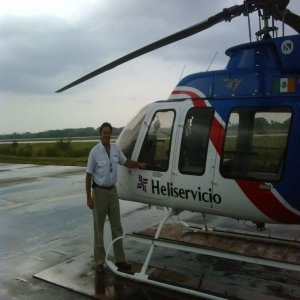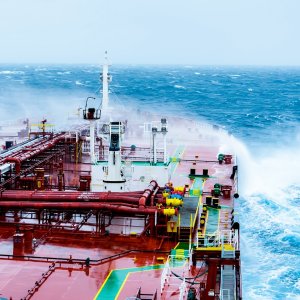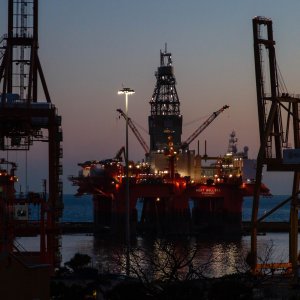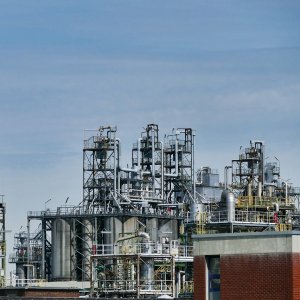IMP's Long-Term Deepwater Preparation
STORY INLINE POST
Q: How has the IMP been working in the long-term to prepare Pemex for its move to deepwater?
A: One important decision for the IMP was to start sending people to participate in joint training projects since the end of the 1980s. The IMP participated in five joint projects with University College London, each lasting for two years. After sending our people to the United Kingdom to receive training and education, we moved to encouraging our personnel to study for PhDs in France, the United States and Brazil.
This training allowed us to start collaborating on projects with Pemex to prepare them for deepwater activities. For example, we did a project with virtual fields in the Bay of Campeche with a water depth of 700m in 1993, which acted as a motivational project as Pemex began to look at Mexico’s shallow water areas.
At the beginning of 2003, the Investigation and Development Programme for Technologies for the Exploitation of Deepwater was established within the IMP, which currently consists of 53 people, 29 of whom have a PhD.
Q: Brazil has been very successful at understanding how different deepwater technologies can be applied. What can Mexico learn from the way Brazil has done this?
A: At the moment, we are following Brazil’s example. The IMP went to Brazil in 2002 and one of the most impressive things that Brazil has achieved since then is working well with a strong supplier base. The only way to manage this is through creating your own capabilities and precisely communicating your requirements to your suppliers. If you don’t know how systems behave under different conditions, suppliers will not take you seriously. This is certainly something that Pemex needs to take into account when it starts deepwater development.
Since 2002 we have developed seven projects with the intention of addressing our inexperience in deepwater and complementing our existing capabilities, gained through working in the offshore arena for 30 years. Although we did not have a research programme in place at that time, we worked to develop technologies that could be applied in different areas. Compared to Brazil, Mexico’s knowledge gap is relatively small due to this experience.
Q: What are the main technologies that are in the private sector domain that should be applied in Mexico?
A: The main technologies are subsea systems, flexible pipelines and risers, and floating systems. Drilling technology is also very important, because a sound working knowledge of deepwater drilling is needed before exploration activities can begin safely. Our role is to develop these capabilities together with Pemex, and establish the framework to evaluate all technologies that suppliers will offer to Pemex.
Q: When Pemex will issue tenders for deepwater projects, do you sit down with the NOC to evaluate the technical aspects of the bids?
A: Yes, that is one of the roles of the IMP. Generally, we help Pemex to establish the technical terms for its tenders. We help them evaluate the proposals they receive and we also help them with project operation. We have experts in operational processes and that can help to solve problems at every stage of a project, from exploration to field development and production. For example, the IMP is currently working in collaboration with Pemex to develop a design plan for drilling activities at the Lakach project. In these cases, the IMP acts as the technological branch of Pemex.
Q: What are the IMP’s priorities today to develop and assimilate new deepwater technology?
A: Currently, our main priority is to develop the capabilities to evaluate existing technologies. At this moment, we have the capability to evaluate FPSOs and semi-submersible drilling rigs. We have decided to focus on FPSOs because they are the most likely to be used, because of their flexibility, and the fact they can be used in fields with no existing infrastructure. Brazil also used FPSOs as their production system, providing quick production and the capital to eventually build permanent systems. Semi-submersible drilling rigs are already active in the deepwater Gulf of Mexico. We are also focused on the evaluation of risk, the reliability of systems, and the characterization of hazards.
Q: Do you believe that FPSOs will be the primary production solution in Mexico’s deepwater, or will Pemex apply solutions that have proven to be successful in the deepwater section of the US Gulf of Mexico, such as spars?
A: Other infrastructure such as spar systems could be used in deepwater. One of the Perdido fields might implement the spar system. On the American side, Shell is using a spar at a depth of 2,800m. As well as spars and FPSOs, other deepwater production options include semi- submersibles and TLPs can be used. However, because we think FPSOs will be a way to bring deepwater projects to early production, we have focused on related technologies as a priority in our deepwater division, including the correspondent anchors and suction casings required. However, we understand the difficulty, if not impossibility, of developing this technology alone.
Q: How can Pemex better improve its deepwater operations over time?
A: With the evaluation system that we now have in place, we will be able to collect the information that we need in order to plan ahead and improve efficiency in the years to come. The level of risk that a private company can take is different from the level of risk that is acceptable for a government company. In a private company, the stakeholders are individual people. In Mexico, the entire population of the country is the stakeholder.
Q: Does the IMP work with other research institutions in Mexico?
A: Yes, for example CISESE. There are three research institutions for the energy industry: IMP, IIE for the electric industry, and ININ for the nuclear industry. Currently, we are in the process of joining our capabilities to meet the needs of each industry, but these three institutions are completely different in terms of management and technology priorities.
Additionally, there is a committee formed by IMP and Pemex personnel dedicated to innovation and investigation. There are five top-level Pemex executives on this committee, coming from the corporate office and the four subsidiaries. The rest of the people on the committee are from the IMP. New project proposals are subject to approval of this Committee, which is a great support for us. To proceed with a proposal, we need the approval from our internal technical division. Once authorized by the committee, the funds are assigned and the implementation of the project is supervised by the technical division.
Q: What is the outlook for the development of the deepwater research budget in the coming years?
A: We are trying to increase the budget in order to promote more and better projects. We have improved the quality of our proposals, but our main challenge remains to develop the best proposals and best solutions.



















